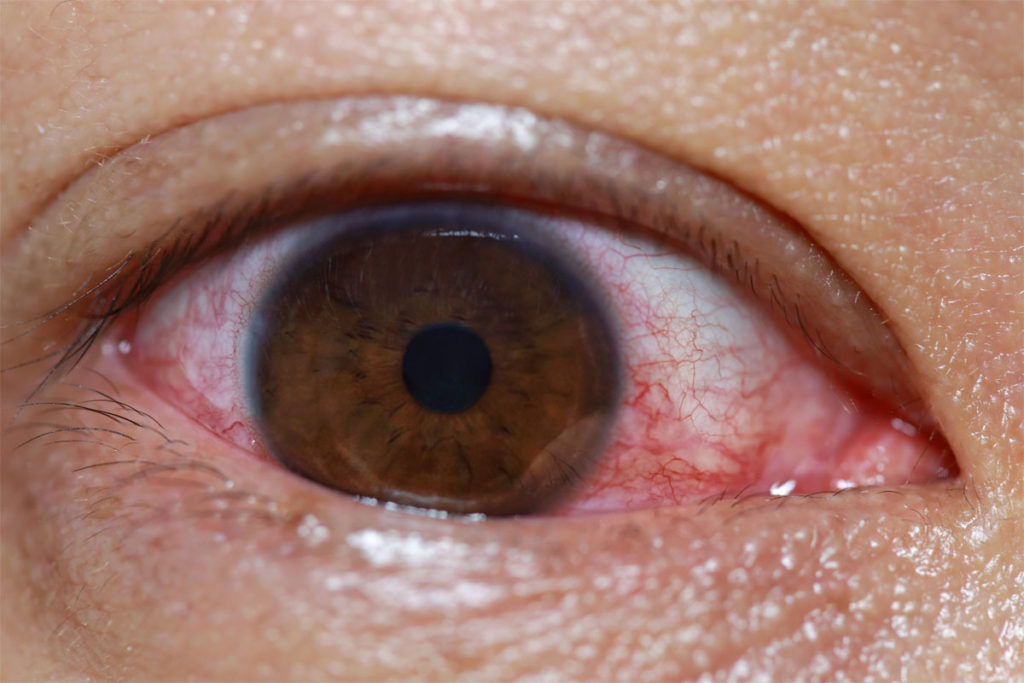Eye Infections

Eye Infections and Treatment
Common Eye Infections
Inflammation and infections of the eyelid that affects the eyelashes and/or tear production are called Blepharitis. Symptoms of blepharitis include white, flaky debris present on the eyelids, itching and sometimes redness. Most commonly, a bacterial infection of the eyelid causes blepharitis, but sometimes microscopic mites are to blame.
Characterized by pink coloration in the infected eye (sometimes one or both), conjunctivitis is the inflammation of the conjunctiva (underside of the eyelid and surface of the eye). It also causes excessive tearing and irritation. Viruses, bacteria, and allergies can cause different types of conjunctivitis. Bacterial infections often also lead to yellow or greenish discharge and require antibiotics for treatment. Viral conjunctivitis, like the common cold, is highly contagious and will clear up on its own. Pinkeye, a common term for Conjunctivitis, is most prominent in children: learn more about Kids and Conjunctivitis.
Allergic Conjunctivitis – this form of Pinkeye is not caused by a bacterial or fungal infection of the eye, but by allergies. Allergic Conjunctivitis is not contagious, so children don’t need to miss school for fear of contamination. It can easily be treated with antihistamines.
This infection is caused by bacteria introduced to the eye on dirty contact lenses. It causes painful, watery, red eyes and only occurs in patients who wear contact lenses.
Another bacterial eye infection, corneal ulcer can occur due to over-use of contact lenses, poor contact lens hygiene and even due to bacterial exposure in hot tubs or fresh water. Ulcers occur when bacteria infect the cornea and puncture the surface. Corneal ulcers are painful and should be treated immediately with antibiotics to prevent vision loss.
A stye is an infection or point of inflammation localized on the eyelid where the hair follicles of the eyelashes are present. When bacteria infects and blocks these oil glands, it causes a painful red bump on the eyelid referred to as a Stye. They can be treated with a warm compress and antibiotics, usually clearing away naturally in within a few days or weeks of appearing.
Don’t ever try to pop a stye, as this can cause more damage to the area that will struggle to heal and can expose the eye to further infections. If you are experiencing a persistent or particularly painful Stye, contact your local eye doctor immediately for a consultation.
Although it is usually quite hard to penetrate the outer layers of the eye – bacteria, viruses, and fungus can sometimes get access to the cornea, the front of the eye. This inner eye infection is most likely to happen after an eye injury that leaves the inner eye damaged or vulnerable.
How we protect your vision from eye infections
Treatment of eye disease and eye infection varies based on the condition. Viral infections typically clear up on their own, but bacterial infections sometimes require antibiotic eye drops, ointments or oral medications.
At Innovision Family Eyecare in Katy, Dr. Sanwari is fully equipped to provide diagnosis and effective treatment of eye infections and common eye diseases like glaucoma, macular degeneration and cataracts. If you or your child experiences any change in vision or unusual symptoms in your eyes, you should schedule an eye exam right away. The sooner treatment begins, the sooner your vision will return to normal and the sooner you will find relief from unpleasant or painful symptoms.
